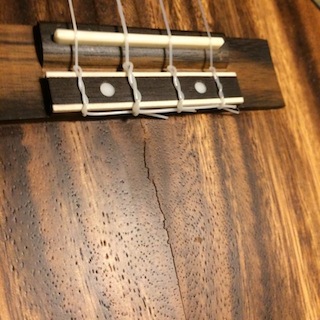I have a Greg Bennet Samick Baritone ukulele. it has a crack in the sound board. i originally thought it was a crack in the finish but over time it has gotten longer and i noticed now the the top part the sound board is now above the bottom part so i know its not just cracking. if i had only thought to take it in sooner it may have been an easy fix.
Here are several picks of the crack.


(Well i can only seem to upload one image here and when I go to edit i can't add more. sorry)
its the black line you can see on the sound board.
I did buy this to use as a cheep knock around guitar and it was not terribly expensive but to be able to fix this would be great. would it be possible for me to fix or should i leave it to a professional. This ukulele only cost me $150 NZD. (roughly $125 USD) so if i was to take it in would it be worth fixing.
any ideas, tips and tricks you have would be appreciated. this is a great community here and i know there is a solution out there.
Edit: I also posted this question at the Acoustic Guitar Forums, there is some more great advice there too. see here for more info.
Here are several picks of the crack.


(Well i can only seem to upload one image here and when I go to edit i can't add more. sorry)
its the black line you can see on the sound board.
I did buy this to use as a cheep knock around guitar and it was not terribly expensive but to be able to fix this would be great. would it be possible for me to fix or should i leave it to a professional. This ukulele only cost me $150 NZD. (roughly $125 USD) so if i was to take it in would it be worth fixing.
any ideas, tips and tricks you have would be appreciated. this is a great community here and i know there is a solution out there.
Edit: I also posted this question at the Acoustic Guitar Forums, there is some more great advice there too. see here for more info.
Attachments
Last edited:



